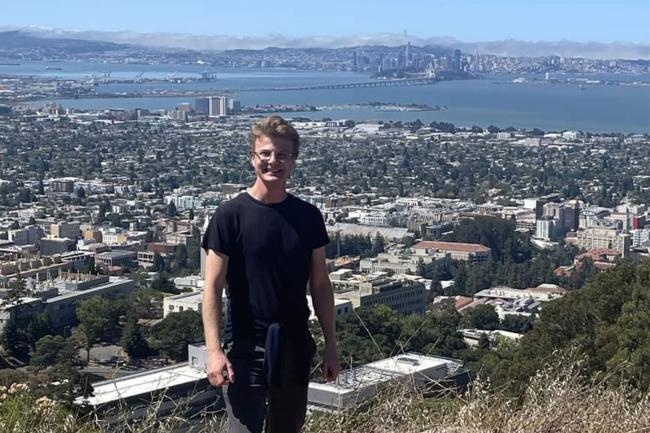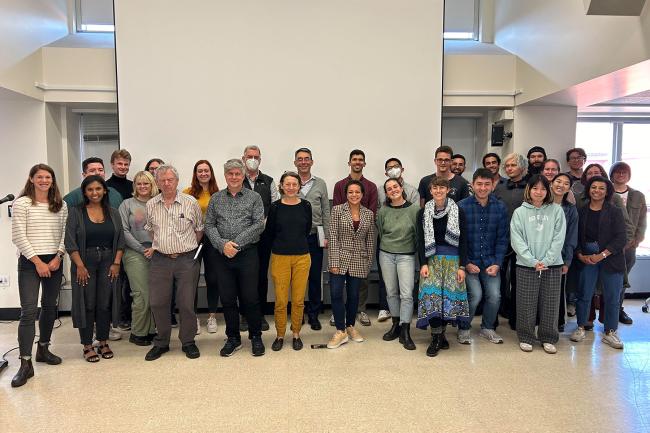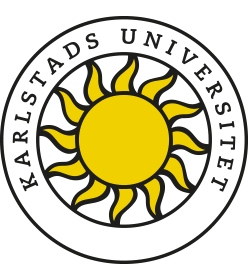Hello there, Rickard Nilsson, doctoral student in English linguistics!
2025-02-11You are currently at UC Berkeley in California. What are you doing there?
– Thanks to Fulbright, an exchange program funded by the U.S. Department of State, the Jane and Dan Olsson foundation and the Sixten Gemzeus foundation, I have the opportunity to spend a year here and collaborate with researchers at the Department of Linguistics. I arrived in the autumn of 2024 and will stay until July 2025. One of the reasons I chose Berkeley is the large proportion of Spanish and English speakers here, as well as the presence of many leading experts in my field.
My goal is to carry out an important part of my doctoral project, audit courses, and build an academic network. At the moment, I am auditing a course on metaphors, an exciting and central aspect of cognitive linguistics. In the spring, I will continue my discussions with researchers such as Dan Slobin and Leonard Talmy – a fantastic opportunity, as they are some of the foremost scholars in my field. Another goal is to present my research findings at a conference this summer.
Can you tell us about your dissertation research?
– My research area is semantic typology within linguistics. I study similarities and differences between languages and how these influence speakers. Currently, I am examining how native speakers of English, Spanish, and Swedish "frame" descriptions of movement and the implications this has for their thinking.
What do you hope your research will contribute to?
– Research in semantic typology is important for several reasons. All languages describe our world in unique ways, with different strengths and weaknesses. By mapping how speakers use their linguistic resources, we can better understand how language shapes our perception of the world and how we interact with our surroundings.
Since language influences thought patterns, I see semantic typology as a crucial field for increasing understanding and building bridges between people. We live in an uncertain world where misunderstandings can have serious consequences. The Fulbright program aims to strengthen mutual understanding between people in the U.S. and other countries through academic exchange. Given the current situation in the U.S., I am working hard to contribute to these goals.
How has your stay been so far? Have you had the chance to explore the local culture?
– I am enjoying my time here and have met several doctoral students and professors with whom I collaborate daily. Fulbright regularly organises events and gatherings, so it is never dull.
Berkeley is a charming town with a welcoming and friendly atmosphere. There are many lovely walking trails, and I have had the opportunity to try new foods and experience new cultural activities. The city is calm and beautiful, while San Francisco is just 30 minutes away by subway for those seeking a livelier urban environment. The weather is almost always pleasant, which makes life easier.
Have you encountered any challenges?
– One challenge has been adapting to an academic culture that differs from the Swedish one. There is a stronger competitive culture here, where prestige and tuition fees play a greater role. At first, it was unfamiliar, but I have learned to navigate how things work here. In linguistics, there are also different research perspectives at the department that sometimes clash, leading to interesting discussions.




